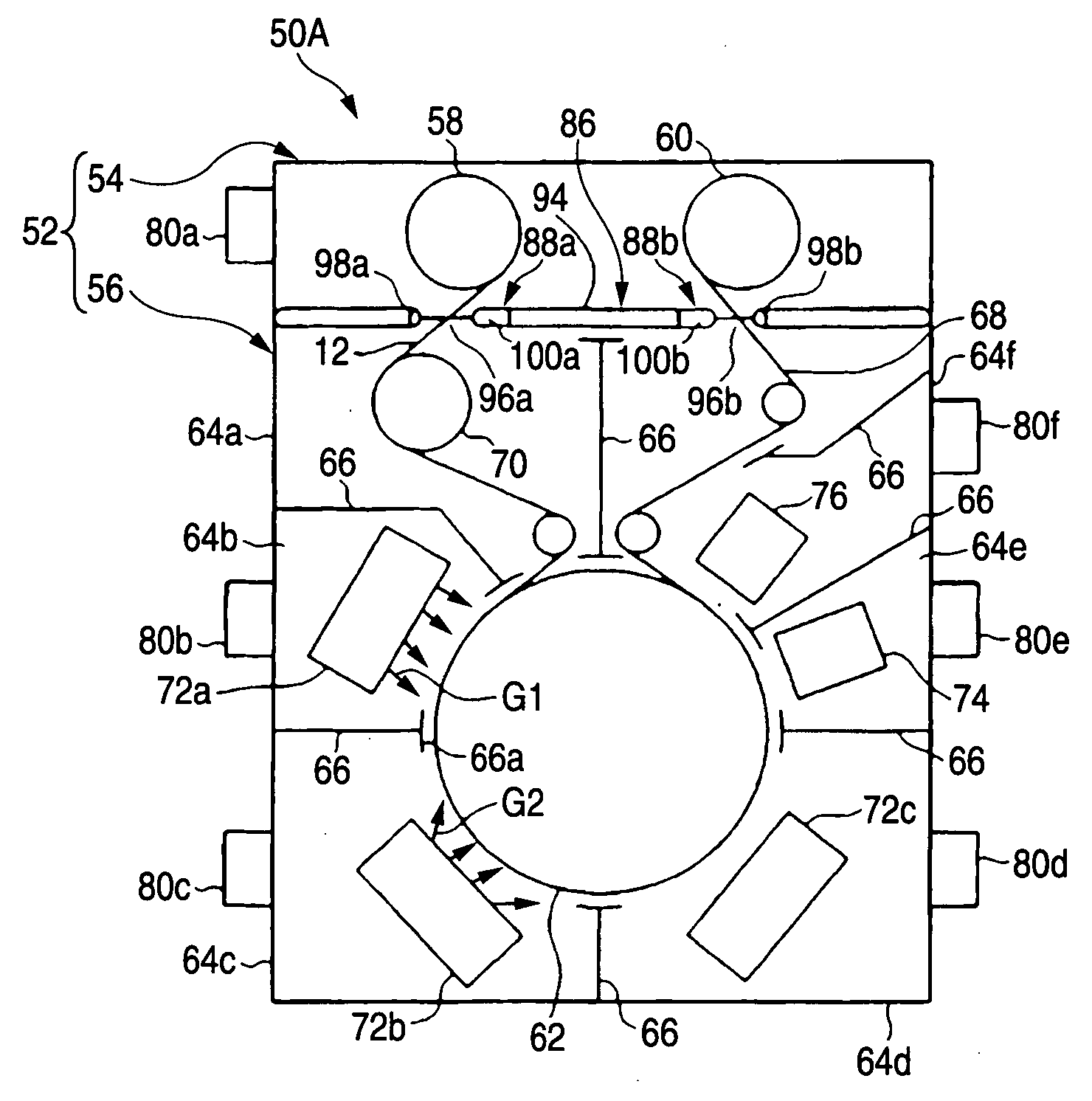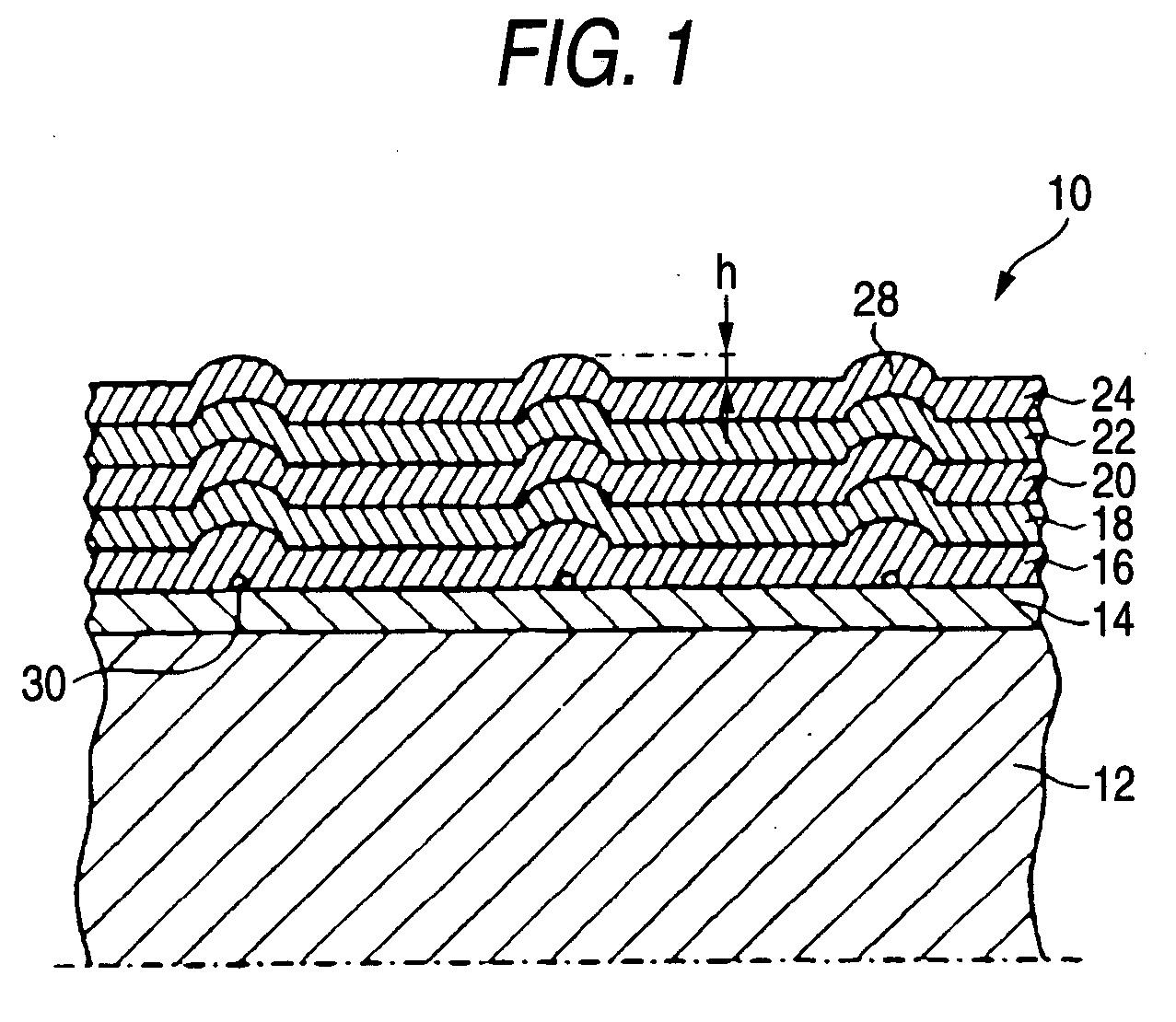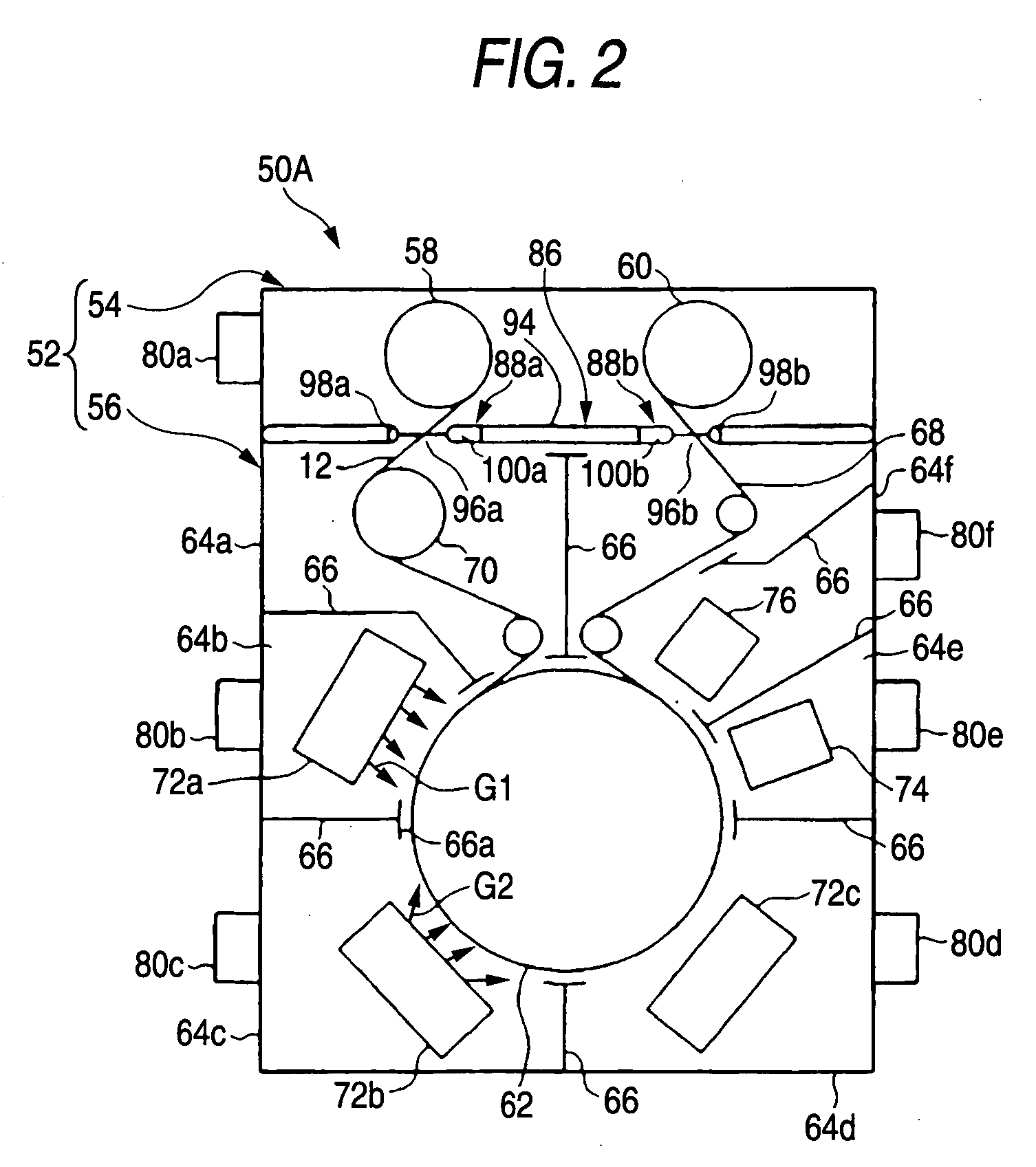Process and apparatus for producing magnetic recording medium
a technology of magnetic recording medium and processing equipment, which is applied in the direction of vacuum evaporation coating, coating, coating carrier support, etc., can solve the problems of one-tenth as much recording density, limited use of hard disks as removable media, and inferior high density recording characteristics of flexible disks and magnetic tapes, so as to reduce defects on magnetic recording medium, excellent production suitability, and prevent deformation
- Summary
- Abstract
- Description
- Claims
- Application Information
AI Technical Summary
Benefits of technology
Problems solved by technology
Method used
Image
Examples
example 1
[0203] An undercoating liquid containing 3-glycidoxypropyltrimethoxysilane, phenyltriethoxysilane, hydrochloric acid, aluminum acetylacetonate, and ethanol was applied to a polyethylene naphtbalate film having a thickness of 63 μm, a surface roughness Ra of 1.4 nm, and a length of 300 m by gravure coating, and dried and hardened at 100° C., to form a 1.0-μm-thick undercoating layer 14 of a silicone resin. A coating liquid containing a silica sol having a particle size of 25 nm and the undercoating liquid was applied to the undercoating layer 14 by gravure coating, to form projections having a height of 15 nm on the undercoating layer 14 at a density of 10 projections / μm2. The undercoating layer 14 was formed on both sides of the substrate 12.
[0204] The resultant substrate 12 was attached to a feed roll 58 of an apparatus 50A shown in FIG. 2 according to the first embodiment, and was conveyed while bringing the substrate 12 into close contact with a water-cooled film forming roll 62...
example 2
[0210] Flexible disks 10 were produced in the same manner as Example 1 except for using an apparatus 50B shown in FIG. 7 according to the second embodiment. Materials and characteristics of the members contained in the first and second shutters 88a and 88b in the vacuum separator 86 were equal to those of Example 1.
example 3
[0211] Flexible disks 10 were produced in the same manner as Example 1 except that the first underlayer 16, second underlayer 18, magnetic layer 20, and protective layer 22 were formed on each of the both sides of the substrate 12 in 1 process (1 pass) by using an apparatus 50C shown in FIG. 8 according to the third embodiment. Materials and characteristics of the members contained in the first and second shutters 88a and 88b in the vacuum separator 86 were equal to those of Example 1.
PUM
| Property | Measurement | Unit |
|---|---|---|
| temperature | aaaaa | aaaaa |
| temperature | aaaaa | aaaaa |
| temperature | aaaaa | aaaaa |
Abstract
Description
Claims
Application Information
 Login to View More
Login to View More - R&D
- Intellectual Property
- Life Sciences
- Materials
- Tech Scout
- Unparalleled Data Quality
- Higher Quality Content
- 60% Fewer Hallucinations
Browse by: Latest US Patents, China's latest patents, Technical Efficacy Thesaurus, Application Domain, Technology Topic, Popular Technical Reports.
© 2025 PatSnap. All rights reserved.Legal|Privacy policy|Modern Slavery Act Transparency Statement|Sitemap|About US| Contact US: help@patsnap.com



